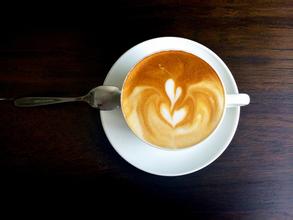Introduction to the production area of Arabiya Coffee Bean Flavor description
Arabica coffee beans
The caffeine content of this coffee is also low. The traditional processing method is to manually harvest coffee berries, peel them on the same day, and manually select coffee beans, roast them, and then grind them. With fresh milk, do not use the general market creamer, so coffee is particularly smooth and rich. Specific features are:
1. The smell of fragrant Yu is stronger;
2. It is not easy to have bitter taste;
3. Moderate coffee oil content;
4. High acidity;
Caffeine content is 30%-40% of Robusta
Arabica coffee trees grow at an altitude of 900 meters to 2000 meters; cold-resistant, suitable growth temperature is 15-24℃; larger humidity is required, annual rainfall is not less than 1500 ml, and at the same time, higher requirements are required for cultivation techniques and conditions.
Arabica coffee beans are mainly produced in South America (except Argentina and parts of Brazil), Central American countries, Africa (Kenya, Ethiopia and other places, mainly East Africa), Asia (including Yemen, India, parts of Papua New Guinea), China Yunnan, Hainan, Taiwan also grow a small number of Arabica coffee beans in the world, Arabica coffee accounts for about 65%-80%, its excellent flavor and aroma, making it the only one of these native species can be directly drunk, alone coffee. However, its resistance to drought, frost, diseases and insect pests is low, especially to the biggest natural enemy of coffee-leaf rust, so all producing countries are committed to improving varieties. For example, Sri Lanka, which is known as Sri Lanka, used to be one of the famous coffee producing countries, but at the end of the 19th century, coffee plantations were not spared because of leaf rust. Since then, Sri Lanka has turned to black tea, and with India as the black tea kingdom Arabica coffee tree, one of the world's most important coffee trees. Arabica species (scientific name Coffee Arabica) originated in Ethiopia's Abyssinia Plateau (now Ethiopia Plateau). It was mainly used as medicine in the early stage. The habit of baking and drinking was cultivated in the 13th century. It was introduced into Europe through the Arab world in the 16th century and further became a favorite drink of people all over the world.

Important Notice :
前街咖啡 FrontStreet Coffee has moved to new addredd:
FrontStreet Coffee Address: 315,Donghua East Road,GuangZhou
Tel:020 38364473
- Prev

In the coffee popular area, the British prefer to drink tea.
The British like to drink tea, but people living around Britain are keen on another kind of drink, coffee. The Nordic region, located in the north of England, is the most coffee-hungry region in the world. The five Nordic countries occupy the first, second, third, fourth and sixth places in the ranking of coffee consumption per capita, respectively, while Belgium, which ranks eighth, faces the United Kingdom across the sea. Why are the British?
- Next

Introduction to the quality of roasted coffee beans by flavor description method
Coffee roasting has a particularly important effect on the taste and flavor of boutique coffee. Brown beans are loved because of the aroma and taste formed by chemical reactions at high temperatures. Coffee beans in the roaster, after drying, high-temperature decomposition, cooling, in the two endothermic exothermic explosion occurred in the second explosion, resulting in flower and fruit aroma, rich taste. Of course, the baking process
Related
- Beginners will see the "Coffee pull flower" guide!
- What is the difference between ice blog purified milk and ordinary milk coffee?
- Why is the Philippines the largest producer of crops in Liberia?
- For coffee extraction, should the fine powder be retained?
- How does extracted espresso fill pressed powder? How much strength does it take to press the powder?
- How to make jasmine cold extract coffee? Is the jasmine + latte good?
- Will this little toy really make the coffee taste better? How does Lily Drip affect coffee extraction?
- Will the action of slapping the filter cup also affect coffee extraction?
- What's the difference between powder-to-water ratio and powder-to-liquid ratio?
- What is the Ethiopian local species? What does it have to do with Heirloom native species?

